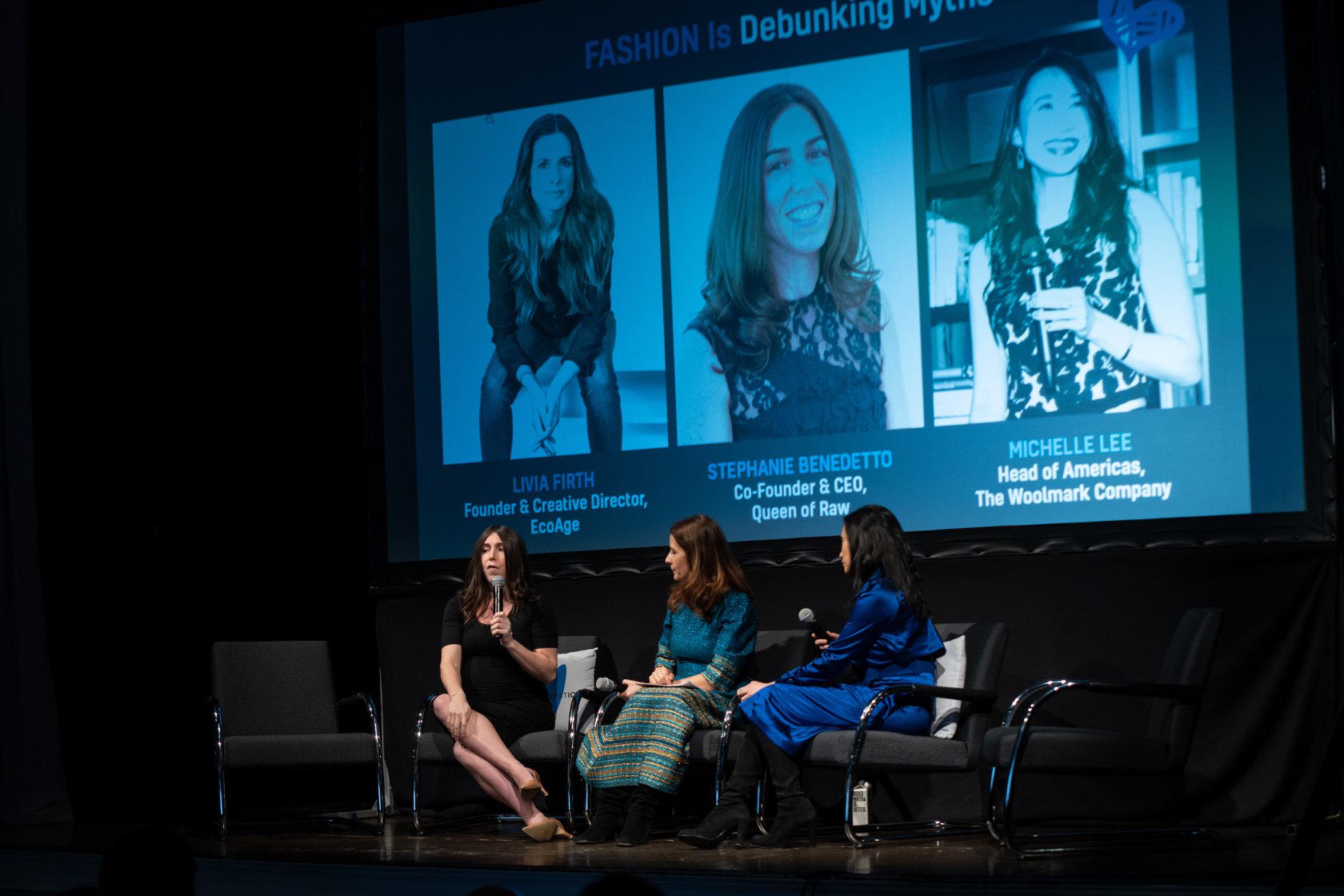
Green Success Stories sits down with Stephanie Benedetto, the founder of Queen of Raw to discuss her company and how she plans to build a global marketplace that addresses the issue with unused textiles and supply chain mismanagement in the fashion industry.
Tell us a little bit about you and your background:
I am on a mission to solve the world’s water crisis. And my focus is textiles, which is the second biggest polluter in the world of clean water. Every single year, $120 billion dollars worth of unused textiles just sits in warehouses collecting dust or being burned and sent to landfills. And this supply chain waste matters now more than ever.
We are currently experiencing a crisis of supply. More unused inventory than ever before because of canceled orders, closed stores, huge returns, and missed seasons and collections. And I like to say, at that volume, waste is not only environmentally irresponsible, it’s a CFO issue.
That is the problem that my company, Queen of Raw, addresses. We built a global marketplace with AI-powered supply chain software so businesses can buy and sell this waste, while intelligently minimizing waste streams going forward.
Why do I do what I do? By reducing textile waste, we have already saved over 1 billion gallons of water. That’s enough clean water for 1.4 million people to drink around the world for 3 years. I’m doing this for my children. I want them to have clean water to drink, clothes that aren’t toxic to wear, and a planet to live on.
What is a fun fact about you?
I’ve been a competitive sailor since I was a child, so I guess you can say my love for water started early on!
Why do you think climate change and sustainability is such an important topic today?
There has been this myth for so long that sustainability has to cost you more money to participate. The good news is that by focusing on, for example, a business’ waste and unused inventory, brands and retailers can sell it TODAY and make money. And then take that money and put it back into doing good things in their supply chain without their overall CAPEX increasing. They can pay their workers more. They can buy more sustainable materials. They can adopt innovative technology solutions. Allowing them to be more efficient and do better TOMORROW. So we can not only survive, but thrive.
Sustainability, to me, is about building solutions that make sense for people, planet, and profit. And I want to encourage everyone from fast fashion to luxury haute couture, across industries and around the world, to be able to participate because they are all a part of the solution. Changing just a small percent of the way they do business can have a massive impact on our world. While allowing us to build for the supply chain of the future, one that is more on-demand, more local, and more sustainable.
We work with government to show how valuable sustainability is to businesses. Through the New York Circular City Initiative, we created a whitepaper with H&M, Unilever, Cisco, Goldman Sachs, Ellen MacArthur Foundation, and NYC government, showing how many good jobs would be created and how much could be saved and made by New York City going circular in the coming years. This created strong trustworthiness in what we are doing while also strengthening the case for business models that are good at their core and focused on people, planet, and profit.
What do you envision your industry looking like 10 years from now?
When we first started talking to fashion brands and retailers years ago about opportunities to sell their waste and deadstock textiles, it was seen as a nice to have, not a have to have. We would end up only talking to the sustainability departments and, although they are great and our brand champions, they often didn’t have a budget to take on new initiatives or they were a newly created position within the company that did not have a clear line of vision into other parts of the business.
Bringing about meaningful change requires the participation of c suites–we need the CMOs who are worried about storytelling around the good sustainable work they are doing, the CIOs and COOs who are responsible for managing the supply chain operations day to day, and the CEOs responsible for setting the corporate agenda.
Fast forward to today and according to the latest McKinsey report, these issues of sustainability are top of mind for everyone. That’s why we have to build sustainable business models that make good business sense.
Don’t get me wrong: I know a lot of businesses are trying incredibly hard to become more sustainable, but they also need to answer to stakeholders and investors, so it’s vital that we get the economics right. And from that point of view, you can resell waste to free up costly warehouse space, recoup up to 15% of your bottom line, and also get a better sustainability story to tell, that should also improve your top-line sales. One of our enterprise customers saw 3x the conversion rate in their online DTC business just by talking about it.
What can the average person do to make a difference?
The textile industry is the #2 polluter in the world! And if we don’t make a change, by 2025, 2/3rds of the entire world’s population will face shortages of fresh water and be exposed to hazardous chemicals from textile production alone. So we’re not talking about 100 years from now. We’re not talking about 50 years from now. We’re talking about today and on our shores.
I encourage everyone to take a few seconds and read the labels on their clothing. Just like the food we put into our bodies, knowing what the material is made of and where it comes from before it touches our body and our loved ones’ bodies all day long is so important.